Forsythia is a beautiful flowering shrub that can add beauty and interest to your garden. Not only is Forsythia a perfect flower, but it’s also hardy and easy to grow. Forsythia is a popular plant for gardeners looking for a modest, low-maintenance shrub. There are many Forsythia plants to choose from, so you can find the right one for your garden. Forsythia is a hardy shrub or small tree that can be grown in just about any climate. It has bright green leaves and clusters of yellow flowers. Forsythia is popular for its long-lasting flowers, which can add a touch of color to your garden all summer.
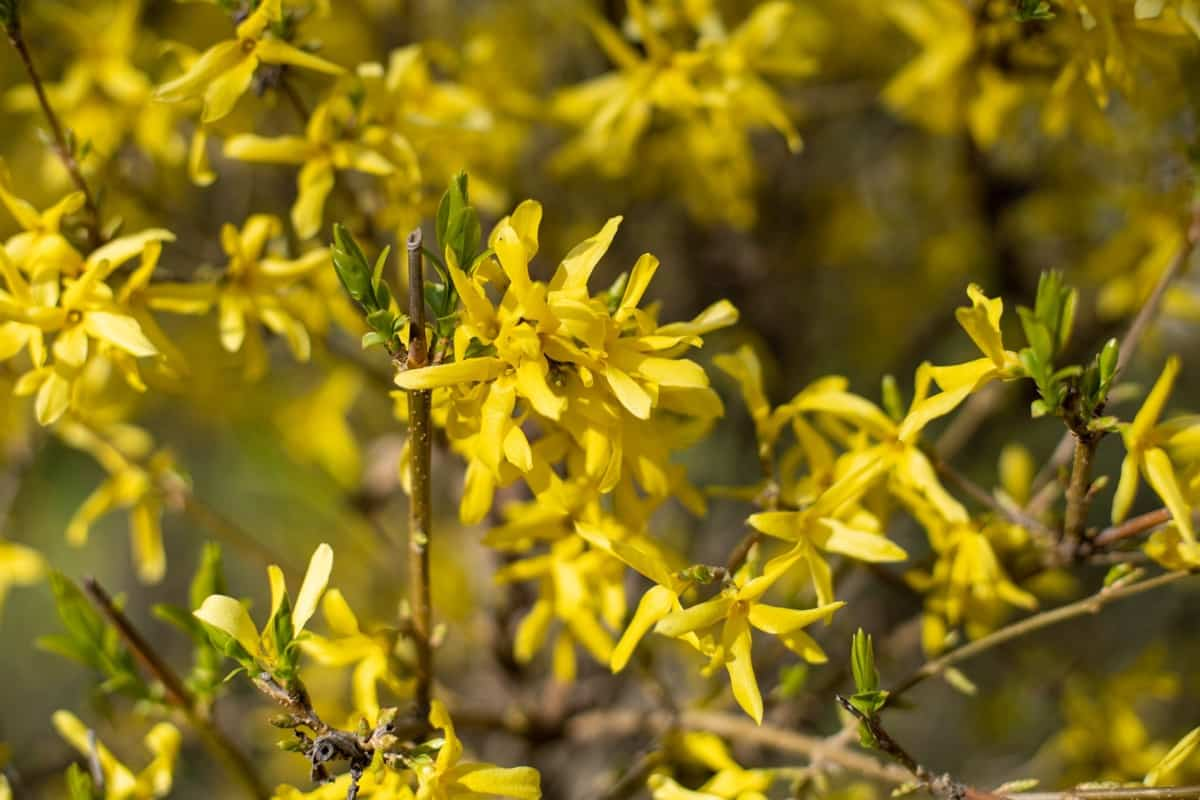
How to Grow and Care for Forsythia in Your Garden
Types of Forsythia Plants
Kolgold
The kolgold Forsythia is a graceful shrub with erect branches and rounded leaves. The flowers are variably colored, including shades of yellow and white. There are also variegated forms available. This plant can grow 6-8 feet tall and wide, making it a great choice for a small garden or container. The kolgold Forsythia flourishes in moist but well-drained soil.
Forsythia Arnold Dwarf
The Forsythia Arnold Dwarf is a dwarf variety of Forsythia perfect for smaller gardens. This plant grows only 1-2 feet tall and has dark green leaves that are ovate. The Arnold Dwarf is great for adding height and color to a smaller space.
Forsythia Northern Sun
There are many Forsythia plants, each with unique features. Some Forsythia plants are shrubby and low to the ground, while others are tall and wide-spreading. Forsythia Northern Sun is a dwarf variety of this popular shrub. This plant has bright green leaves that are serrated along the edges.
In case you missed it: How to Grow and Care for Agrimony in Your Herb Garden
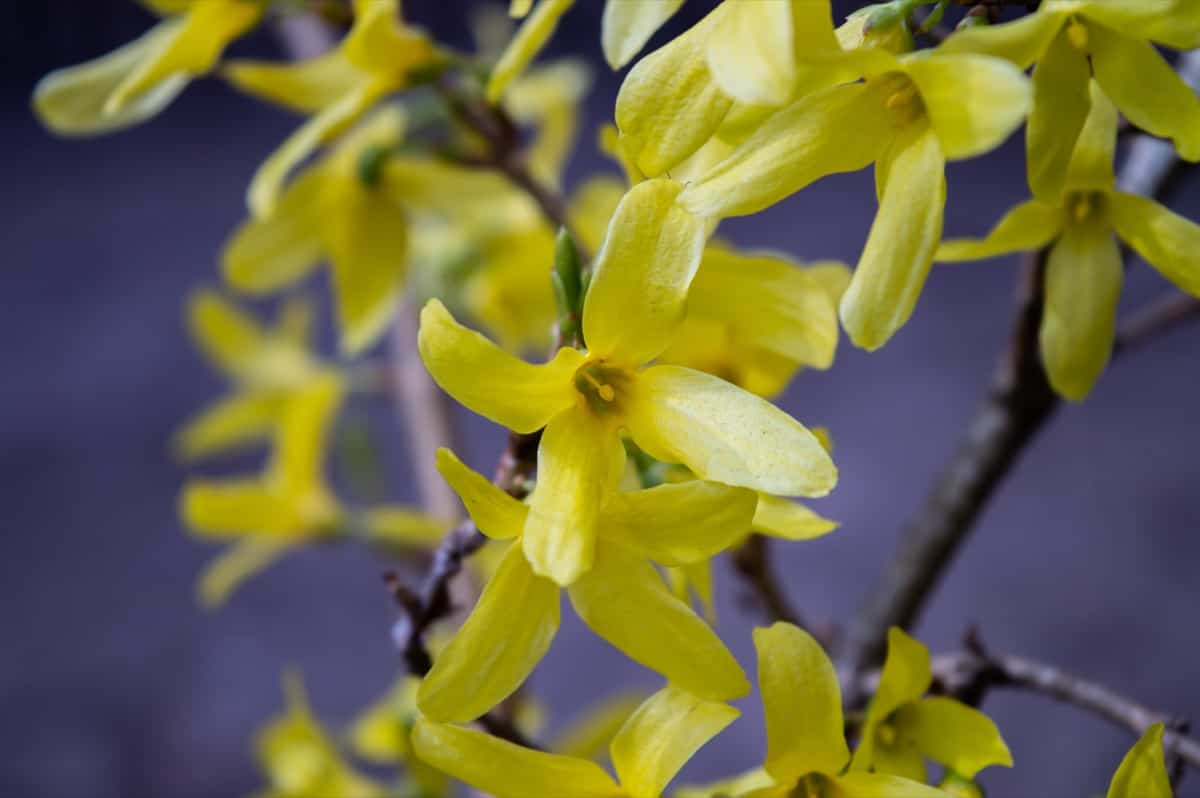
Meadowlark
Meadowlarks are beautiful, exotic flowers that grow well in warm climates. Forsythia hybrid cultivars are some of the most popular flowers because they have a wide range of colors, including yellow.
Forsythia Courtasol
Forsythia plants come in many different types, all with unique features. Some Forsythia plants are shrubs, while others are trees. Most Forsythia plants grow best in partial to full sun and can be planted in various soils, including clay, loam, and sand. Some Forsythia plants have upright stems and foliage covered in soft, velvety hairs. These types of Forsythia plants are known as courtasols.
Other Forsythia plants have more graceful stems that droop over the ground and soft and feathery leaves. All Forsythia plants are beautiful additions to any garden, regardless of their type. They’re ideal for areas that get a lot of sunlight because they need little care other than regular watering.
Forsythia Suspensa
Many Forsythia plants can be grown as annuals, but some can last for several years in a container. The Forsythia Suspensa is a type of Forsythia that is compact and upright with glossy green leaves. This plant is typically used as a hedge or screen because it can grow up to 18 inches tall.
Forsythia Northern Sun
Forsythia Northern Sun is a fast-growing shrub with bright yellow flowers. The leaves are glossy, making them a favorite choice for landscaping purposes. It grows about 3 feet tall and wide and can be pruned into a hedge or small tree. Forsythia Northern Sun is perfect for areas that receive lots of sunlight, such as the front of a house or near an entranceway.
In case you missed it: How to Grow and Care for Daffodils in Containers

Climate Suitable for Growing Forsythia in Your Garden
Forsythia plants are hardy perennials that require full sun to grow well. If you’re looking for a shrub that will thrive in any climate, Forsythia might be the right choice. This low-growing shrub is adaptable to many different soil types, needs few fertilizers or water, and can grow in full sun or partial shade.
Some tips on how to grow Forsythia in your garden include planting it in a sunny location with well-drained soil and evenly distributing fertilizer throughout the growing season. If you live in an area with mild winters, Forsythia may be able to be grown outdoors year-round, though supplemental cold weather protection may be necessary occasionally. Once established in your garden, Forsythia will require little care other than watering when needed.
Soil Requirement for Growing Forsythia in Your Garden
Forsythia is best suited for gardens with moist, well-drained soil. It prefers full sun but will tolerate light shade. Forsythia flowers are mainly yellow and are highly attractive to bees and butterflies. Forsythia is a hardy shrub that can be grown in most garden soils but prefers well-drained soil with a pH of 6.0 to 7.5. Although Forsythia grows best in full sun, it will tolerate some light shade. It is not fussy about its water conditions and can be grown in dry or moist soils, but it benefits from regular watering during hot, muggy weather.
Water Requirement for Growing Forsythia in Your Garden
Forsythia is a hardy shrub that withstands many growing conditions, making them a popular choice for gardeners in mild or colder climates. These plants require average moisture levels, with regular watering helping to prevent root damage and ensure healthy foliage. It prefers moist, well-drained soil but can tolerate dry conditions. Forsythia is tolerant of full sun or partial shade. You must water your Forsythia regularly throughout the growing season, watering it more in extreme weather. Proper fertilization will help promote healthy growth and bloom.
In case you missed it: How to Grow and Care for Petunias in Containers: A Beginners Guide
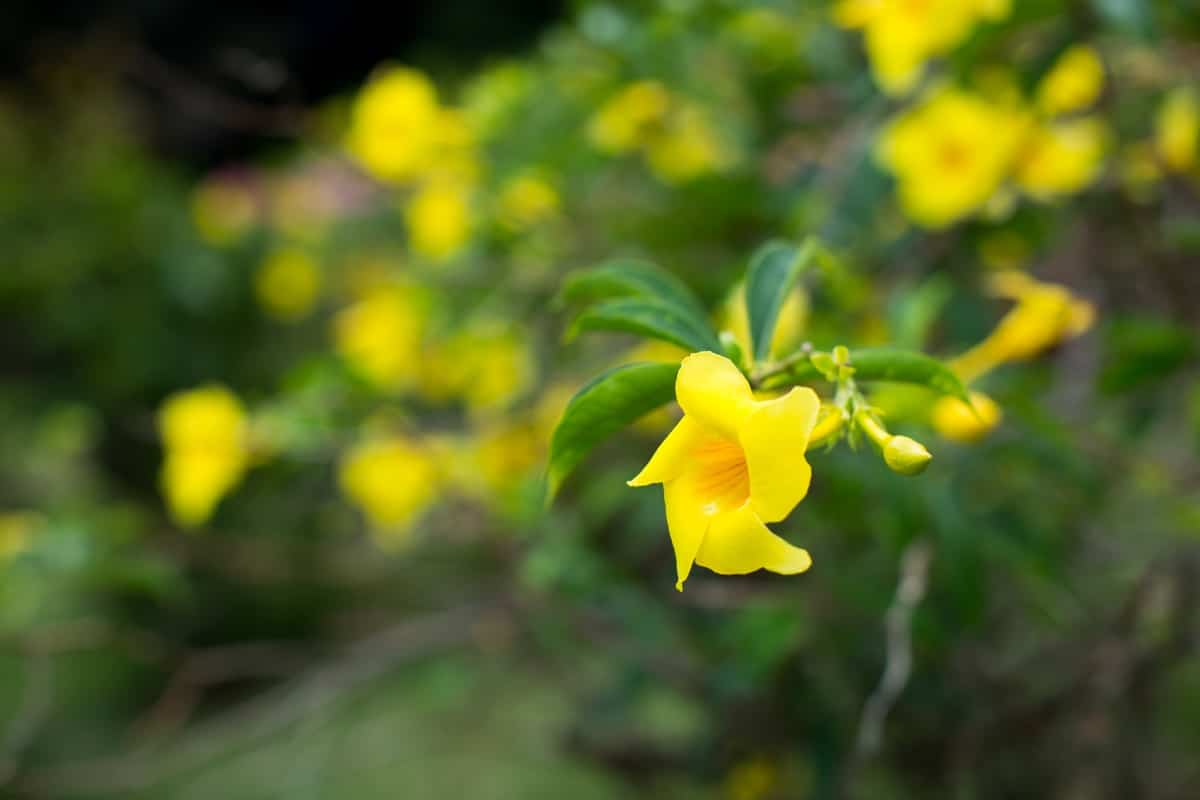
Propagating Forsythia
From Cuttings
If you have a cutting from a Forsythia shrub or tree, you only need water, sand, and a rooting hormone. Cut the stem just below a node to make a cutting. Make sure the cutting is fresh before starting. Fill a pot with water and add enough sand to cover the bottom of the pot. Take the cutting out and make a second horizontal cut about halfway down the stem, ensuring not to split in two again.
Finally, make vertical cuts about one-half inch apart along both sides of the initial horizontal cuts, leaving enough space between them for new roots to grow. Gently push each cutting into the soil mix, ensuring not to bend or break the stems. Twist the cutting off of the stem and place it in the pot to expose the top of the cutting. Apply rooting hormone to the top of the cutting. Keep your Forsythia cuttings moist but not soggy while rooted in water. Once roots form, transfer them to the soil and wait for new Forsythia plants to grow.
Forsythia Plant Care
Fertilizer Requirement for Growing Forsythia in Your Garden
Forsythia is a flowering shrub that can grow up to six feet tall and wide. It prefers moist, well-drained soil with plenty of organic matter but will also do well in sandy soils. Forsythia requires fertilizer to grow vigorously and should be fertilized at least monthly during the growing season. You can add a tablespoon of organic matter, such as compost, to the soil around your Forsythia plant to help it absorb nutrients.
Forsythia is a popular shrub or small tree that can be grown in the home garden. One of the best fertilizers for growing Forsythia is an organic fertilizer. There are also various other ways to fertilize your plants, and you will need to research what is best for your specific plant. A balanced fertilizer will satisfy the plant’s needs while not harming the environment. To fertilize Forsythia, mix a quarter-cup of organic matter (such as manure) with every watering.
In case you missed it: How to Grow and Care for Swiss Chard in Containers: Planting to Harvesting Process

Forsythia Plant Care in Winter
Forsythia is a shrub that can grow up to 6 feet tall and live for up to 20 years in ideal conditions. It is a hardy plant that can withstand temperatures down to around freezing but does best in neutral or slightly alkaline soil. Because Forsythia requires regular watering in winter, water the plant thoroughly before the first frost.
Forsythia should be kept dry during the winter by removing fallen leaves and branches. Forsythia is a hardy shrub that can thrive in most climates but does best in full or partial sun. In winter, protect Forsythia from frost by wrapping the trunk and branches with burlap, garden cloth, or insulation.
Pruning Forsythia Plant
Remove dead or diseased branches to prune Forsythia and cut back the old limbs to the main stem. Leave at least two inches of stem on each new branch. Forsythia will bloom more brightly and longer if pruned in early summer. Forsythia is easy to grow and requires little maintenance. The only requirement is to be pruned occasionally to maintain its shape and size. Different Forsythia plants can be pruned in various ways to create attractive and effective landscape plants.
The pruning process is simple, but different types of Forsythia may require different techniques. Forsythia plants are typically pruned in late winter or early spring after the new growth has stopped. Cut back older branches that cross over other branches or grow out of bounds if needed. Cut away any dead or diseased wood, and remove any leaves that are buds that will not open.
Pests and Diseases of Forsythia and Their Control
The most common pest that can affect Forsythia plants is aphids, which congregate on the undersides of leaves to feed on plant sap. They produce a soft honeydew secretion that can make leaves sticky and distorted, and flowers may be stunted. Imported fire ants also attack Forsythia, injecting their salivary toxin into plants to paralyze them and consume any tissue they find.
In case you missed it: How to Grow and Care for Gladiolus Flowers: A Useful Guide for Beginners
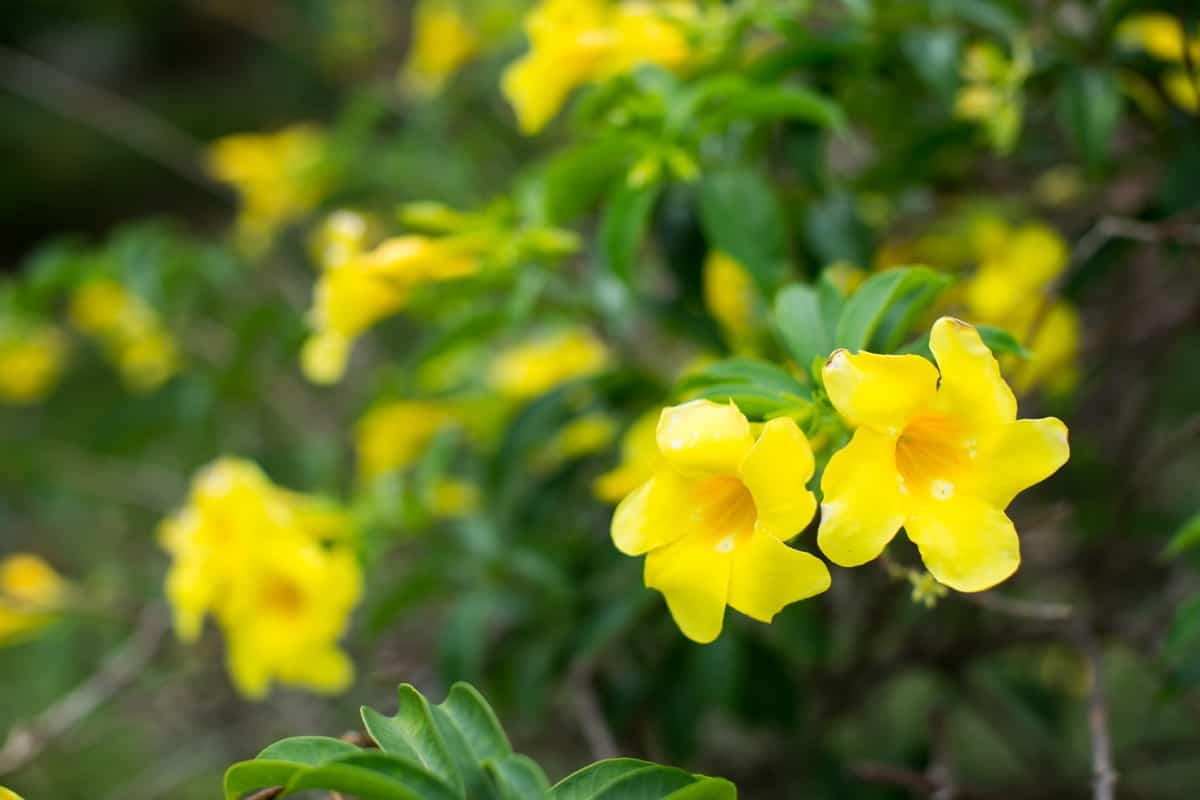
If you see these pests or diseases attacking your Forsythia plants, act to control them. One effective method of controlling aphids is using a soap spray made from a dish or liquid hand soap. Make a solution using one-part soap to nine parts water, and spray the solution onto the aphids directly. Repeat as necessary until the aphids are gone.
To control imported fire ants, you will need to prevent them from entering your plant in the first place by using complementary deterrents such as barriers around the base of the plant or spraying pyrethroid insecticides around the garden’s perimeter. There are many diseases of Forsythia, but the most common and deadly is leaf blight. Effective control of this disease requires early detection and timely treatment with fungicides. Fortunately, some effective management practices can be used to help reduce the incidence of leaf blight in plants.
Conclusion
Forsythia is a hardy shrub that can be grown in almost any climate. As long as you provide it with enough sun, water, and fertilizer, Forsythia will thrive and produce beautiful flowers year after year. Forsythia is a shrubby plant that can be grown in any climate, making it an excellent choice for gardeners of all skill levels.
In case you missed it: How to Grow and Care for Pansies in Containers: A Beginners Guide
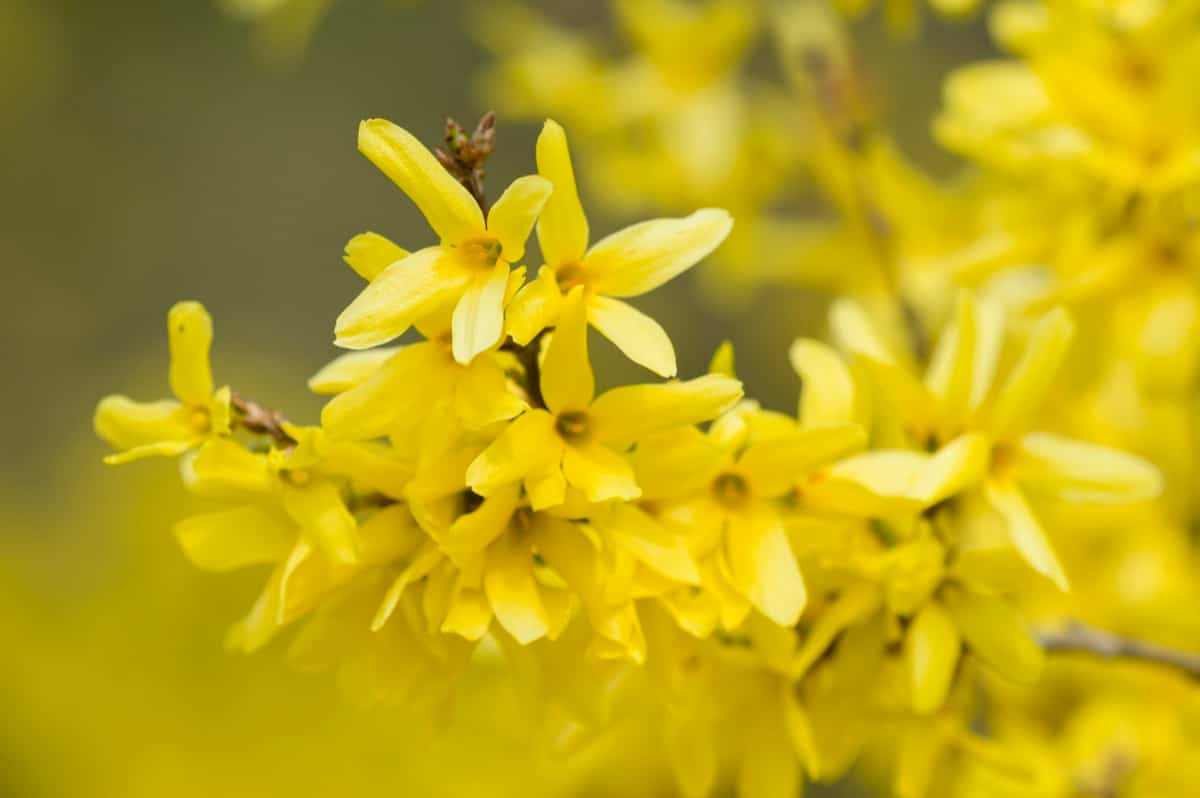
When planting Forsythia, remember that the plants prefer full sun but will tolerate partial shade. Once established, Forsythia requires little care other than occasional pruning to prevent it from becoming too dense or overwhelming its surroundings. If you want to add color and texture to your garden, Forsythia might be a perfect choice.
- Asparagus Seed Germination and Variety Selection
- Seasonal Flower Gardening: Best Practices for Spring, Summer, Fall, and Winter
- How to Grow Hibiscus from Flower
- Plantation Ideas for Home Decoration: A Beginners Guide
- Flower Garden Designs and Layouts for Beginners
- Planting and Spacing Techniques in Papaya: A Beginner’s Guide
- Growing Gold: Essential Techniques for Planting Pineapples
- How to Make Kalanchoe Plant Bushy: Home Remedies and Solutions
- 11 Reasons Why Your Gardenia is Not Blooming: Home Remedies and Solutions
- Eco Elegance: The Guide to Designing a Drought-Tolerant Landscape
- Gardening on a Slope: Strategies for Hillside Landscaping
- Nourish and Flourish: Top Organic Mulches for Thriving House Plants
- Everything You Want to Know about Indian Mogra Flower: Discover Uses and Growing
- Green Thumb Success: Expert Tips for Cultivating Greenhouse Pumpkins All Year Round
- Maximize Growth & Flavor: The Ultimate Guide to Companion Planting in Herb Gardens
- How to Control Rhododendron Problems Naturally: Home Remedies and Organic Ways to Fix Them
- Natural Magic: The Remarkable Benefits of Cinnamon for Plants
- Best Steps to Revive Dying Tulip with Natural and Organic Treatment
- 10 Reasons Why Your Angel Trumpet is Not Blooming: Remedies and Treatment
- How to Fix Periwinkle Leaf and Flower-Related Problems: Natural Remedies and Solutions
- How to Fix Zinnias Leaf and Flower Problems: Discover Natural and Home Remedies
- Organic Steps to Induce Lemon Tree Flowers: A Comprehensive Guide
- Bloom Booster: Crafting the Perfect Homemade Bougainvillea Fertilizer
- Optimizing Growth: A Guide to Applying NPK Fertilizer for Potted Plants
- 10 Best Homemade Fertilizers for Rubber Plant: DIY Recipes and Application Method
- How to Boost Female Pumpkin Flowers: Effective Steps for More Flowers and High Yields
- Transform Your Indoor Garden: Top Benefits of Pink Salt for Houseplants
- 10 Best Homemade Fertilizers for Peacock Plants (Calathea): Easy DIY Guide
- Unlock Blooms: 9 Reasons Why Your Potted Chrysanthemum is Not Blooming
- 8 Reasons Why Your Potted Hibiscus is Not Blooming: Fix it with Simple Solutions
- Unlock Blooms: 9 Key Reasons Your Potted Frangipani Won’t Flower
- 10 Reasons Why Is My Ice Plant Not Blooming: Remedies and Treatment
- 10 Reasons Why My Potted Hydrangea Not Blooming: Treatment and Remedies
- 10 Reasons Why is My Wisteria Not Blooming: Remedies and Treatment
- 10 Reasons Why is My Goldfish Plant Not Blooming: Remedies and Treatment
- Maximize Your Space: Ultimate Guide to Balcony Gardening with Grow Bags